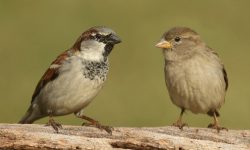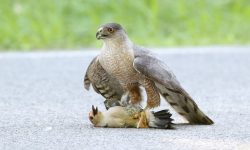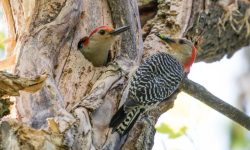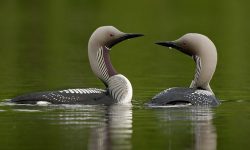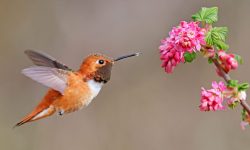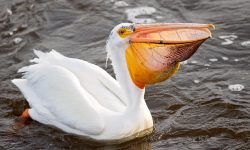Chrysolophus pictus, commonly known as the Golden Pheasant or Red-crowned Pheasant, is a striking bird native to China. To keep these birds healthy and vibrant, it is important to understand their dietary preferences and daily care needs. This article explores the four primary types of food that Chrysolophus pictus loves, along with essential tips on how to care for them every day.
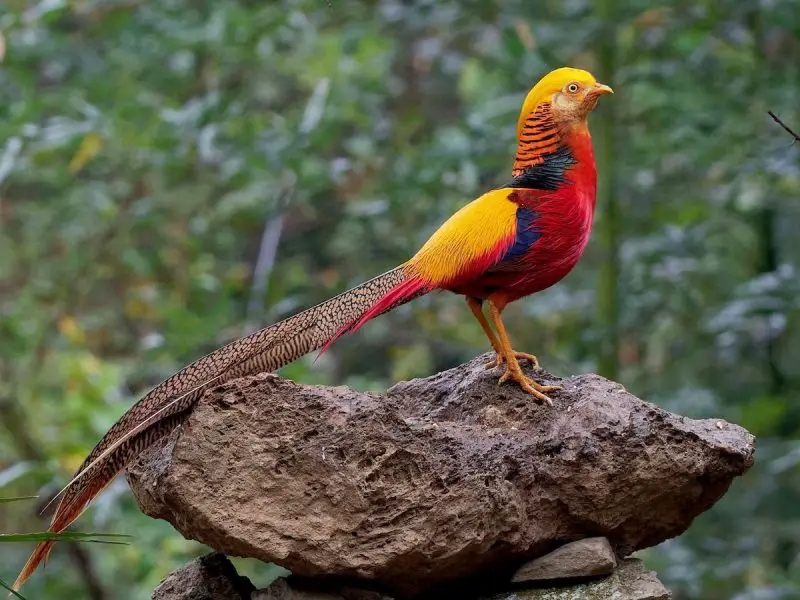
1. Seeds and Grains
Seeds and grains constitute a nutritional cornerstone in the diet of Chrysolophus pictus (Golden Pheasant), serving as primary sources of carbohydrates, essential fatty acids, and plant-based proteins. These macronutrients supply the energy required for daily metabolic processes, locomotion, thermoregulation, and reproductive functions.
Nutritional Importance
Carbohydrates from grains provide quick-release energy, while the inclusion of whole seeds contributes dietary fiber, aiding gastrointestinal motility and promoting a healthy digestive microbiome. Some seeds also contain trace elements such as magnesium, phosphorus, and B vitamins, which are vital for nervous system function, bone maintenance, and feather development.
Common Seeds and Grains in the Golden Pheasant’s Diet
-
Millet (Panicum miliaceum): A small, nutrient-dense seed rich in carbohydrates and relatively high in B-complex vitamins. It is highly palatable and easily digestible, making it ideal for both adult and juvenile birds.
-
Corn (Zea mays): A staple grain high in starch and calories. While corn provides energy, it should be balanced with protein-rich components due to its low lysine and methionine content (amino acids essential for feather and muscle development).
-
Wheat (Triticum aestivum): Offers a moderate protein profile along with fiber and essential micronutrients such as selenium and manganese. Whole or cracked wheat is often used in maintenance diets.
-
Barley (Hordeum vulgare): Contains both soluble and insoluble fiber, beneficial for digestive health. It also offers slow-releasing carbohydrates and moderate protein, making it a supportive grain for sustained energy.
Dietary Management
To ensure a balanced nutrient profile, these grains should be offered in combination and rotated seasonally. Supplementation with a commercially formulated game bird feed is strongly recommended, as it is designed to meet species-specific nutritional requirements, including optimal levels of protein (typically 18–22%), calcium, and trace minerals. Such feeds often contain added lysine, methionine, and vitamin A—nutrients that are limited in raw grains.
A proper seed-to-protein ratio in the daily ration is especially important during molting, breeding, and chick-rearing periods, when energy and protein demands are significantly elevated.
2. Insects and Small Invertebrates
A key component of Chrysolophus pictus’ diet, insects and small invertebrates provide high-quality animal protein, along with essential amino acids, lipids, and micronutrients critical for the bird’s growth, plumage maintenance, immune function, and reproductive success.
Nutritional Importance
Animal-derived protein sources are superior in terms of amino acid profile, particularly in lysine, methionine, and threonine—amino acids that are often deficient in plant-based diets. These nutrients play vital roles in muscle tissue synthesis, keratin formation for feathers, and egg production. In addition, many insects are rich in essential fatty acids (e.g., linoleic acid) and minerals such as calcium, iron, and zinc, which contribute to skeletal development and metabolic regulation.
Commonly Consumed Insects and Invertebrates
-
Beetles (Coleoptera): Rich in protein and fats, many beetle species also contain chitin, a fibrous substance that supports gut health by promoting microbial balance.
-
Ants (Formicidae): While small, ants are consumed frequently and provide a compact source of protein. Some species also offer formic acid, which may aid in parasite control.
-
Earthworms (Lumbricidae): High in digestible protein and moisture, earthworms are especially beneficial for young pheasants and during periods of feather replacement (molting).
-
Grasshoppers (Orthoptera): A seasonal favorite, grasshoppers are protein-dense and supply healthy fats. They are often consumed in abundance in wild populations during warm months.
Dietary Recommendations
The inclusion of live or dried invertebrates is especially crucial during energetically demanding life stages such as breeding, molting, and chick-rearing. During these periods, the protein requirement may rise to 22–24% of total dietary intake, significantly higher than in maintenance phases.
In captivity, safe and nutritionally balanced insect options include:
-
Dried mealworms
-
Crickets (live or freeze-dried)
-
Black soldier fly larvae
-
Earthworm pellets or live worms
These should be offered in controlled quantities to prevent excess fat intake and dietary imbalance. It’s also advisable to source insects from pathogen-free suppliers to minimize the risk of disease transmission.
3. Fruits and Berries
Fruits and berries constitute a valuable supplementary component in the diet of Chrysolophus pictus, providing vitamins, natural antioxidants, phytonutrients, and moisture, all of which contribute to immune function, cellular repair, and hydration.
Nutritional Importance
Unlike seeds and insects, fruits are rich in vitamin C, vitamin A precursors (such as β-carotene), polyphenols, and natural sugars like fructose and glucose. These compounds support antioxidant defense systems, which help neutralize free radicals and reduce oxidative stress, particularly during high-energy physiological periods such as molting and reproduction.
The high water content in fruits (often above 80%) also assists with hydration, especially in warm climates or in enclosures without access to natural water sources. Additionally, certain fruits provide dietary fiber, promoting healthy gut motility and nutrient absorption.
Common Fruits and Berries Consumed by Chrysolophus pictus
-
Wild berries (e.g., elderberries, blackberries, raspberries)
Naturally occurring in the pheasant’s native habitat, these berries are rich in anthocyanins and flavonoids with proven antioxidant and anti-inflammatory properties. -
Apples (Malus domestica)
Contain vitamin C, fiber (mainly in the skin), and mild sweetness. Apples should be offered in small, chopped portions without seeds, which contain trace amounts of cyanogenic compounds (amygdalin). -
Grapes (Vitis vinifera)
Highly palatable and hydrating, grapes are also a source of resveratrol—a polyphenol with immunomodulatory effects. Offer in moderation due to sugar content. -
Mulberries (Morus spp.)
Nutrient-rich fruits containing vitamins A, C, and iron. Their soft texture and natural sweetness make them an excellent seasonal treat.
Feeding Guidelines
Fruits and berries should be offered in moderation (typically no more than 10–15% of the total diet) to prevent imbalances due to high sugar content. Always:
-
Use pesticide-free produce, ideally organic.
-
Wash thoroughly to remove any surface contaminants.
-
Remove seeds or pits from fruits like apples or cherries.
-
Chop fruits into small, manageable pieces to reduce choking risk.
Introducing a variety of fruits on a rotational basis helps mimic natural foraging behavior and prevents dietary monotony.
4. Green Vegetation
Green vegetation serves as an essential supplementary food source in the diet of Chrysolophus pictus, contributing dietary fiber, phytochemicals, vitamins, and trace minerals that support digestive efficiency, metabolic balance, and overall health.
Nutritional Importance
Leafy greens and herbaceous plants are rich in fiber, which promotes gastrointestinal motility and gut microbiome stability, reducing the risk of constipation or impaction in captive environments. They are also key sources of:
-
Vitamin A (as carotenoids) – essential for vision, feather quality, and immune function
-
Vitamin K – involved in blood clotting and bone metabolism
-
Folate and iron – support cell regeneration and oxygen transport
-
Calcium and magnesium – vital for skeletal health and neuromuscular function
In addition, the natural act of foraging on greens promotes behavioral enrichment, reducing stress and supporting natural feeding behavior.
Recommended Types of Green Vegetation
-
Leafy greens
Examples: Spinach (Spinacia oleracea), kale (Brassica oleracea var. sabellica), romaine lettuce, dandelion greens
These provide dense micronutrient content and a range of antioxidants. Avoid iceberg lettuce due to its low nutrient density and high water content. -
Tender shoots and leaves
Young shoots from safe plants such as comfrey, nasturtium, or plantain can be offered. These are palatable and easier to digest than mature foliage. -
Grass blades and clover
Fresh-cut grasses (free from herbicides) and white/red clover are often grazed upon in semi-natural or free-range systems. They provide chlorophyll and secondary plant compounds with mild anti-parasitic effects.
Feeding Considerations
-
Only offer pesticide-free, non-toxic plants. Always verify that greens are safe for avian consumption, avoiding plants like rhubarb, tomato leaves, or nightshades.
-
Wash all vegetation thoroughly to remove soil, residues, or pathogens.
-
Rotate greens regularly to prevent overexposure to oxalates or goitrogens found in some plants like spinach or kale.
-
Provide chopped or shredded greens in clean feeders or scatter them for natural foraging activity.
Daily Care Tips for Chrysolophus pictus
Consistent, science-based daily care is essential for maintaining the health, longevity, and behavioral well-being of Chrysolophus pictus (Golden Pheasant). While nutrition plays a foundational role, environmental conditions, hygiene, and regular health monitoring are equally important to support optimal physiology and reduce stress-related disorders.
Housing and Environment
Chrysolophus pictus thrives best in spacious, secure enclosures that mimic its native habitat—typically understory forest and woodland edge environments.
Key Housing Requirements:
-
Space: Enclosures should allow for free movement, flight, and behavioral expression. A recommended minimum space is 10–15 square meters per pair, with vertical clearance of at least 2 meters.
-
Vegetative Cover: Include shrubs, tall grasses, or artificial shelter to replicate natural hiding spaces, reduce stress, and allow birds to establish personal space and pecking order.
-
Microclimate Management: Provide shaded areas for protection from direct solar radiation and shelters against rain or strong winds. Enclosures should also include well-drained ground to prevent foot problems like bumblefoot (pododermatitis).
-
Roosting Structures: Install elevated wooden perches to accommodate nocturnal roosting, which is a natural behavior in this species.
Feeding Routine
An optimal feeding strategy must address nutritional balance, behavioral stimulation, and seasonal metabolic demands.
Daily Feeding Guidelines:
-
Offer a nutritionally complete diet composed of:
-
High-quality seeds and grains (e.g., millet, corn, wheat)
-
Protein sources (insects or game bird feed with 18–22% protein)
-
Fresh fruits and berries (in moderation)
-
Green vegetation (e.g., kale, grass, dandelion greens)
-
-
Provide food in clean, elevated or ground-level feeders to prevent contamination.
-
Ensure continuous access to clean, fresh water, refreshed at least twice daily.
-
Consider scatter feeding or forage trays to encourage natural foraging behaviors and reduce boredom in confined environments.
Cleanliness and Health Monitoring
Sanitation is essential to minimize the risk of bacterial, parasitic, and fungal infections, which are common in captive game birds.
Daily and Weekly Maintenance Tasks:
-
Waste Removal: Clean droppings and uneaten food daily to prevent the buildup of ammonia and harmful bacteria.
-
Disinfection: Disinfect feeders, drinkers, and perches weekly using avian-safe cleaners.
-
Pest Control: Monitor and control external parasites such as mites and lice, especially during warmer months.
Health Observation Protocol:
-
Conduct a brief visual inspection of each bird daily:
-
Look for changes in appetite, alertness, feather condition, and posture.
-
Check for signs of illness such as discharge from eyes/nose, labored breathing, or weight loss.
-
-
Monitor for feather picking or aggressive behavior, which can indicate overcrowding, nutrient deficiency, or stress.
-
Schedule routine veterinary check-ups, especially before and after breeding season.
Enrichment and Natural Behavior
Providing opportunities for Chrysolophus pictus to express its innate behaviors is essential for maintaining both psychological well-being and physical health in captivity. Environmental enrichment helps reduce chronic stress, prevents abnormal behaviors (such as feather plucking or pacing), and improves overall welfare.
Key Forms of Behavioral Enrichment
-
Perching Structures
Install perches of varying heights and diameters using natural branches. Elevated perching satisfies their natural roosting instincts and gives them a sense of security, especially during resting periods. -
Dust Baths
Access to dry, fine soil or sand allows Golden Pheasants to engage in dust-bathing, a natural behavior used to clean feathers and control external parasites. The dust bath area should be kept dry and replenished regularly. -
Foraging Substrates
Scatter grains, chopped greens, or insects across grass, straw, or leaf litter to encourage natural foraging behavior. This stimulates mental activity and reduces boredom associated with confined feeding routines. -
Shelters and Hiding Spots
Provide clumps of vegetation, hollow logs, or visual barriers to mimic the dense underbrush of their natural environment. These features allow subordinate birds to escape aggression and establish territory. -
Visual and Sensory Stimulation
Introduce rotating elements such as hanging greens, mirrors (in moderation), or safe toys made of natural materials. Visual variation in the enclosure can stimulate curiosity and engagement.
Benefits of Enrichment
-
Reduces stress and cortisol levels
-
Promotes healthy feather maintenance and preening
-
Encourages exercise and prevents obesity
-
Supports reproductive behavior and social bonding
Enrichment should be adjusted based on seasonal behaviors, age, and flock dynamics. Regularly changing enrichment types keeps the environment stimulating and reduces habituation.
Conclusion
By providing Chrysolophus pictus with a varied diet of seeds, insects, fruits, and greens, along with attentive daily care, you help ensure they remain healthy, active, and vibrant. Understanding and meeting their nutritional and environmental needs is key to successful care and long-term well-being.

